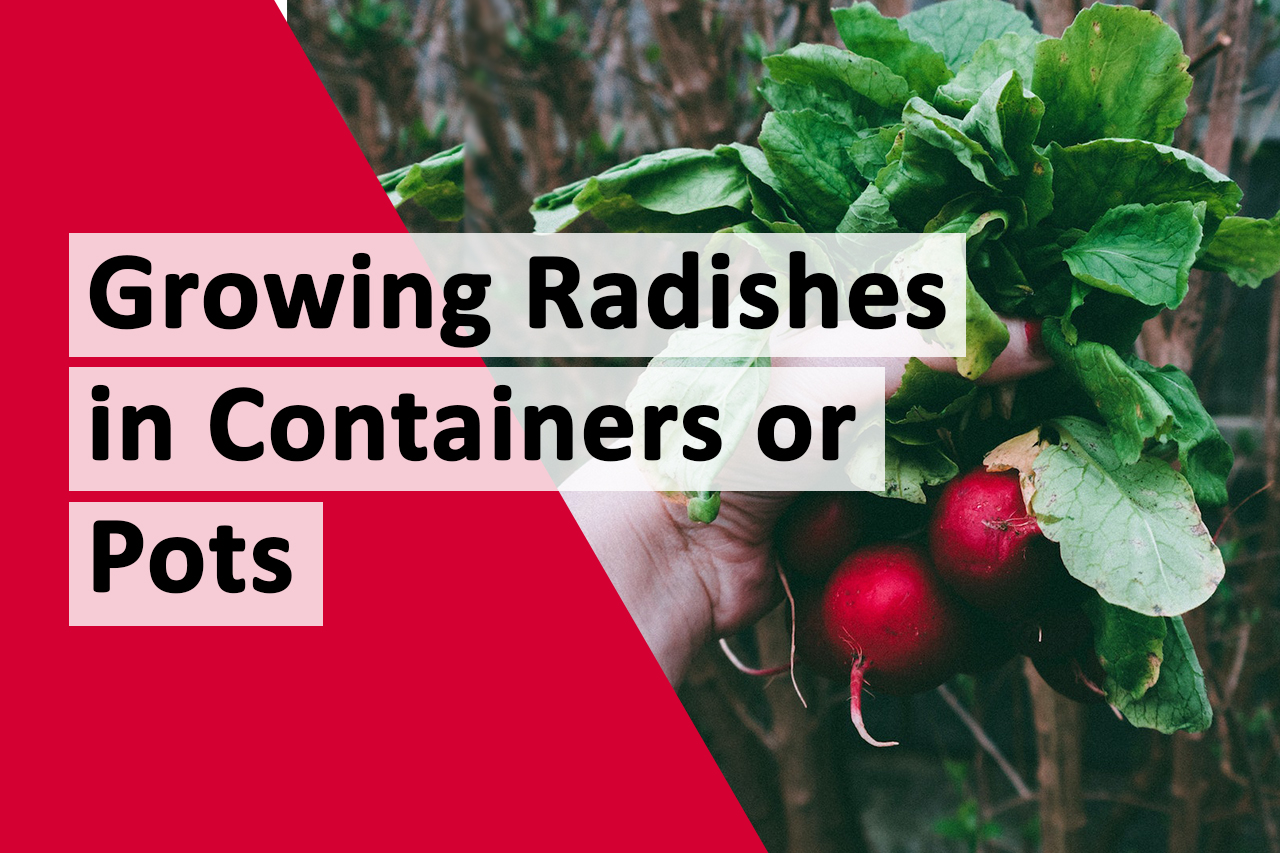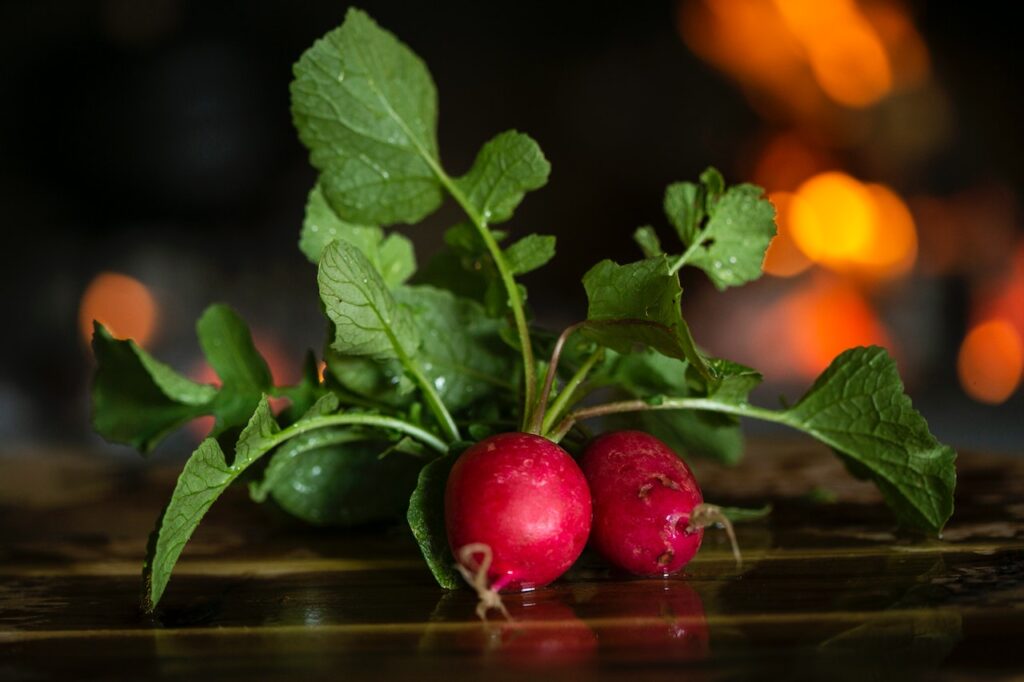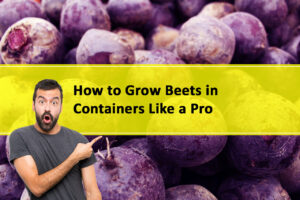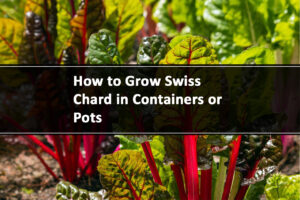Beautiful Plants For Your Interior

12 Tips for Growing Radishes in Containers or Pots
Radishes are fast-growing and versatile vegetables that can be easily grown in pots or containers. You too can experience the joy of growing radishes in containers or pots! Whether you have limited space or want to take advantage of the portability and convenience, growing radishes in containers can be a rewarding experience.
Radishes are a delightful addition to any home garden. These crisp and peppery root vegetables not only add flavor to salads and dishes but also provide a burst of color to your garden.
12 Tips for Growing Radishes in Containers or Pots
Radishes, those delicious, peppery root vegetables, can grow well in containers and offer a splash of color and flavor to your gardening endeavors. We will cover every aspect of growing radishes in pots for you in this detailed manual. We’ve got you covered, from picking the appropriate containers to offering the necessary care. So let’s get started and discover the keys to growing radishes in containers successfully!
1. Choosing the Right Containers
To start your radish-growing journey, selecting the appropriate containers is crucial. Opt for containers that are at least 6-8 inches deep to accommodate the radish roots. Additionally, ensure the containers have adequate drainage holes to prevent waterlogging, as excess moisture can lead to rotting.

2. Selecting the Ideal Potting Mix
Radishes thrive in loose and well-draining soil. Prepare a potting mix by combining equal parts of compost, peat moss, and perlite or vermiculite. This mixture will provide the necessary nutrients and aeration for healthy radish growth.
3. Sowing Radish Seeds
Radishes are quick to mature, making them an ideal choice for container gardening. Sow the radish seeds directly into the potting mix, following the instructions on the seed packet. Ensure the seeds are spaced evenly to allow sufficient room for each radish to grow.
4. Providing Adequate Sunlight
Radishes require ample sunlight to thrive. Place your containers in a location that receives at least 6 hours of direct sunlight each day. If you have limited access to sunlight, consider using artificial grow lights to supplement the natural light.
5. Watering the Radishes
Proper watering is essential for the successful growth of radishes. Keep the potting mix consistently moist but avoid overwatering, as it can lead to rotting. Check the moisture level by sticking your finger into the soil up to your first knuckle. If it feels dry, it’s time to water. Aim to water deeply but infrequently to encourage strong root development.
6. Thinning the Seedlings
Once the radish seedlings emerge, it’s important to thin them out to allow sufficient space for each plant to grow. Thin the seedlings to about 1-2 inches apart, ensuring they have ample room to develop robust roots and form radishes of optimal size.
7. Fertilizing the Radishes
Radishes are relatively low-maintenance when it comes to fertilizing. However, applying a balanced, water-soluble fertilizer once a month can provide an extra boost of nutrients. Follow the manufacturer’s instructions for the appropriate dilution and application method.
8. Controlling Pests and Diseases
While radishes are generally resistant to pests and diseases, it’s essential to monitor your plants for any signs of trouble. Common pests that may affect radishes include aphids and flea beetles. Consider using organic pest control methods, such as neem oil or insecticidal soap, to keep these unwanted visitors at bay.
9. Harvesting Radishes
Radishes are typically ready for harvest within 20-30 days after sowing, depending on the variety. Check for firmness and size to determine if they are ready. Gently pull them out of the soil, starting from the base of the plant. If the radish feels loose or soft, it may need more time to mature.
10. Succession Planting for Continuous Harvest

To enjoy a continuous harvest throughout the growing season, consider practicing succession planting. Sow a new batch of radish seeds every few weeks, staggering the planting times. This way, you can have a steady supply of fresh radishes without overcrowding your containers.
11. Companion Planting with Radishes
Radishes can also serve as beneficial companion plants for other vegetables. Their pungent aroma repels certain pests, making them an excellent choice for intercropping. Try planting radishes alongside lettuce, cucumbers, or spinach to naturally deter pests and promote healthier growth for your entire container garden.
12. Storing Radishes Properly
After a successful harvest, you’ll want to store your radishes properly to maintain their freshness. Remove the radish tops, as they tend to draw moisture from the root. Store the radishes in a cool and dark place, such as the refrigerator, to prolong their shelf life. If you wish to store them for an extended period, consider pickling or freezing them.
If you are creative and love more experimenting you can try growing white radishes in pots or containers.
How to grow white radish in pots or Containers

To grow white radishes in pots, you’ll need a suitable pot, a high-quality potting mix, radish seeds, water, sunlight, and a few basic gardening techniques. Begin by selecting a pot that is at least 8-10 inches deep with drainage holes.
Choose a loose and well-draining potting mix, or enhance it with compost or well-rotted manure for added nutrients. Sow the radish seeds evenly on the soil surface and cover them with a thin layer of soil. Water the seeds thoroughly and keep the soil consistently moist, but not waterlogged, throughout the growth period. Place the pot in a sunny location that receives at least 6 hours of sunlight per day.
Monitor the temperature and ensure it remains within the range of 50-70°F (10-21°C) to promote healthy growth. Once the seedlings emerge, thin them out to provide adequate space for each plant to develop. Regularly water the radishes and avoid overwatering or letting the soil dry out completely.
Fertilize the plants with a balanced liquid fertilizer every two weeks. Monitor for pests and diseases, and treat them using organic methods if necessary. Harvest the white radishes when they reach the desired size, typically around 1-2 inches in diameter, by gently pulling them from the soil.
Adjust the care routine based on the specific needs of your plants and the environmental conditions. With proper care, you can enjoy a successful harvest of delicious white radishes from your pots.
If you are creative and love more experimenting you can try growing radishes in water.
How to Grow Radishes in Water?

Growing radishes in water is a variation of hydroponic gardening, which eliminates the need for soil. Here’s a step-by-step guide on how to grow radishes using the water culture method:
-
Select the right radish variety:
Choose a radish variety that is suitable for hydroponic cultivation. Some popular options include Cherry Belle, French Breakfast, and Easter Egg radishes.
-
Prepare the radish seeds:
Soak the radish seeds in water for a few hours before planting. This will help speed up the germination process.
-
Choose a suitable container:
Select a container that is wide and shallow, such as a tray or a low-sided dish. Make sure it is clean and doesn’t contain any chemicals or residues.
-
Fill the container with water:
Fill the container with enough water to submerge the roots of the radish plants. It’s important to use clean, non-chlorinated water. If your tap water contains chlorine, let it sit for 24 hours to allow the chlorine to evaporate before using it.
-
Plant the radish seeds:
Scatter the soaked radish seeds evenly on the surface of the water. Make sure they are not crowded and have enough space to grow. Gently press them down so they are partially submerged in the water.
-
Provide sufficient light:
Place the container in a location where the radish plants will receive ample sunlight or use artificial grow lights to provide 12-16 hours of light each day. Radishes require a minimum of 6 hours of direct sunlight.
-
Maintain the water level:
Check the water level regularly and ensure that the roots of the radish plants are always submerged. Add water as needed to maintain the desired level.
-
Monitor temperature and humidity:
Radishes prefer a temperature range of 60-75°F (15-24°C) and moderate humidity levels. Keep the growing area well-ventilated to prevent excessive moisture buildup.
-
Provide nutrients:
Radishes grown in water will require a hydroponic nutrient solution. Follow the instructions on the nutrient solution package and mix it with water as directed. Change the nutrient solution every two weeks to provide the necessary nutrients for healthy growth.
-
Harvesting:
Radishes are typically ready for harvest within 3-4 weeks. Gently lift the radish plants from the water and trim the leaves. Wash the radishes thoroughly before consuming.
People also ask:
-
Is growing radishes in containers indoors possible?
Yes, radishes can be grown indoors as long as they receive sufficient sunlight or supplemental grow lights.
-
How often should I water my radishes in containers?
Water radishes whenever the top inch of soil feels dry, typically every 2-3 days. Adjust the frequency based on the weather and moisture retention of the potting mix.
-
Can I reuse the potting mix for growing radishes?
Yes, you can reuse the potting mix for growing other vegetables or herbs. However, it’s recommended to replenish it with fresh compost or organic matter to maintain its fertility.
-
How do I prevent my radishes from bolting?
To prevent radishes from becoming pithy or woody, ensure consistent moisture levels in the soil, avoid excessive heat, and harvest them at the right size.
-
Can I grow radishes with limited space?
Yes, radishes are perfect for container gardening, making them an excellent choice for those with limited space. You can grow radishes on balconies, patios, or even windowsills. Just make sure to choose compact or dwarf varieties that are well-suited for container cultivation.
-
Can radishes be grown in hanging baskets?
Yes, radishes can be grown in hanging baskets as long as the baskets are deep enough to accommodate the radish roots. Choose smaller radish varieties, and ensure the baskets have proper drainage holes. Hanging baskets can be a creative way to grow radishes while maximizing vertical space.
-
Can I grow radishes year-round in containers?
Radishes are cool-season crops and prefer temperatures between 50-70°F (10-21°C). However, with proper temperature and light management, you may be able to grow them year-round indoors.
-
What t should be the radish container depth?
Ideally, choose containers that are at least 6-8 inches deep. This depth allows sufficient room for the radish roots to spread out and grow. If the container is too shallow, the radish roots may become cramped, leading to stunted growth and smaller radishes.
-
What size container for radishes is best?
For most radish varieties, a container with a diameter of at least 8-12 inches is recommended. This size provides enough space for the radish plants to grow and allows for proper root development.
Bottom Line On Growing Radishes in Containers
Growing radishes in pots or containers is a rewarding experience that allows you to enjoy fresh and flavorful radishes, even in small spaces. By following these 12 expert tips, you’ll be well on your way to cultivating a thriving radish garden. Remember to choose suitable containers, provide ample sunlight, and water consistently, and practice proper thinning and harvesting techniques. With a little care and attention, you’ll soon be savoring the crisp crunch of homegrown radishes. Happy gardening!







